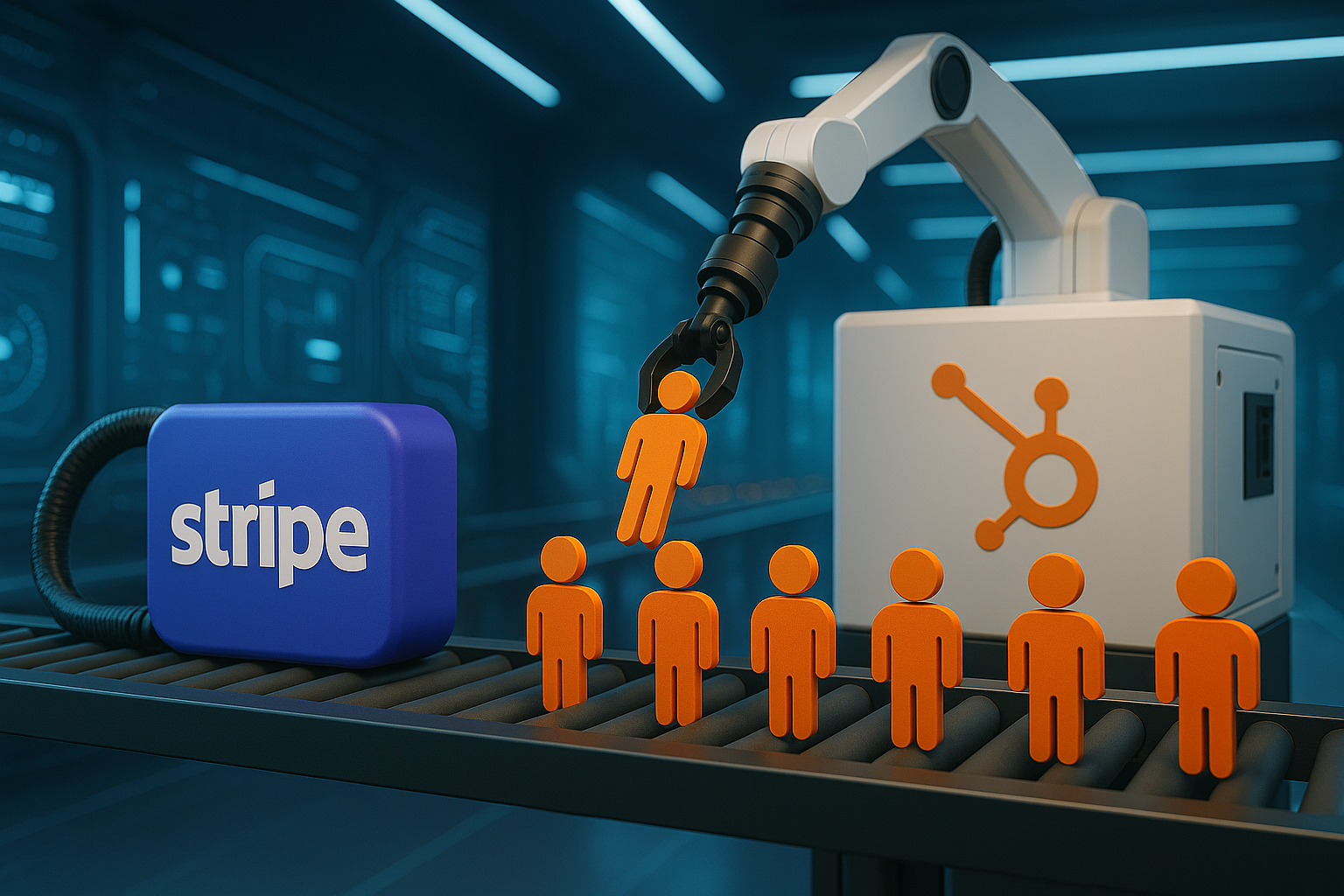Why Integrate Stripe with HubSpot? Key Benefits for SaaS Businesses

Table of Contents
Recurring revenue is the lifeblood of a SaaS business—and managing the full customer lifecycle is what makes that revenue reliable. From acquisition to retention, renewal, and expansion, the ability to track and influence each stage is what separates high-growth SaaS companies from the rest. That’s why aligning your billing system (Stripe) with your CRM (HubSpot) is no longer optional—it’s essential.
Yet many SaaS teams still operate with disconnected systems. Stripe tracks transactions and subscriptions. HubSpot manages deals, contacts, and communication. When these systems don’t talk to each other, it’s nearly impossible to get a clear, actionable view of the customer journey. Sales teams lack visibility into payment status. Customer success doesn’t know which accounts are at risk. Finance is stuck pulling data manually.
The solution? Sync Stripe data into HubSpot.
By syncing subscription and payment data from Stripe to HubSpot, SaaS companies can manage the entire customer lifecycle—especially deal stages—within their CRM. This creates a single source of truth, enabling personalized communication, proactive renewal strategies, and accurate revenue reporting.
Let’s explore the five key benefits of integrating Stripe into HubSpot for SaaS businesses.
Real-Time Data Sync from Stripe to HubSpot
Omniroo offers a solution for Stripe–HubSpot integration to enable automated, near real-time data sync.
This means subscription, customer, and invoice data from Stripe is pushed into HubSpot, where it can be attached to contacts, companies, or deals. However, updates made in HubSpot (e.g. editing a subscription status or changing payment info) do not reflect back in Stripe.
That said, the value is enormous. New charges, failed payments, plan changes, and renewals can all be tracked in HubSpot without manual input. You’ll always have up-to-date Stripe data in your CRM, which empowers sales, success, and marketing teams to take timely action.
Improved Visibility into Subscription Deal Stages
When Stripe data is synced to HubSpot, you can use it to automatically manage deal stages based on subscription status.
For example:
- A new subscription = “Closed-Won”
- Failed payment = “At Risk”
- Trial user = “Trial – Engaged”
- Cancelled subscription = “Lost – Churned”
This alignment ensures that your pipeline reflects real revenue activity. Sales and customer success teams can prioritize follow-ups based on accurate billing insights, rather than guesswork.
Subscription deal stages become dynamic and reliable, enabling better forecasting, more effective handoffs, and higher retention rates.
Personalized and Timely Communication
With Stripe data in HubSpot, you can build automated workflows and targeted emails based on real customer behavior. Examples include:
- Welcome email after first payment
- Dunning sequence for failed payments
- Upgrade offer after 3 months of usage
- Renewal reminder 7 days before plan end
This level of personalization increases engagement and reduces churn. You’re not just sending emails—you’re sending the right message at the right moment.
Reduced Involuntary Churn Through Dunning Automation
Failed payments account for a large portion of SaaS churn—and often go unnoticed until it’s too late. Integrating Stripe into HubSpot allows you to trigger automated dunning workflows when a charge fails or a card expires.
Instead of relying on Stripe’s default emails, you can use HubSpot to:
- Send branded, personalized payment reminders
- Alert your success team via tasks or Slack
- Track follow-up performance and recovery rates
This proactive approach helps recover revenue and prevent churn without adding manual work.
Centralized Reporting Across Revenue and Engagement
Finally, syncing Stripe into HubSpot enables more meaningful reporting and insights. You can combine billing data with lifecycle, engagement, and sales activity to answer questions like:
- Which campaigns drive the most paid conversions?
- What’s the MRR from users acquired last quarter?
- How many high-value customers are up for renewal this month?
No more exporting CSVs or stitching spreadsheets. Everything lives inside HubSpot, giving your entire team a shared, revenue-aware view of the customer.
Final Thoughts
SaaS success depends on managing the entire customer lifecycle—and that starts with connecting your tools. By syncing Stripe data into HubSpot, you equip your team to act faster, communicate better, and reduce revenue leakage.
If you’re ready to operationalize your revenue engine and eliminate silos, tools like Omniroo make Stripe–HubSpot integration easy, reliable, and scalable.
Don’t leave lifecycle management to chance—integrate for growth.